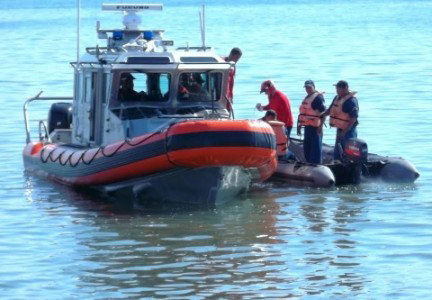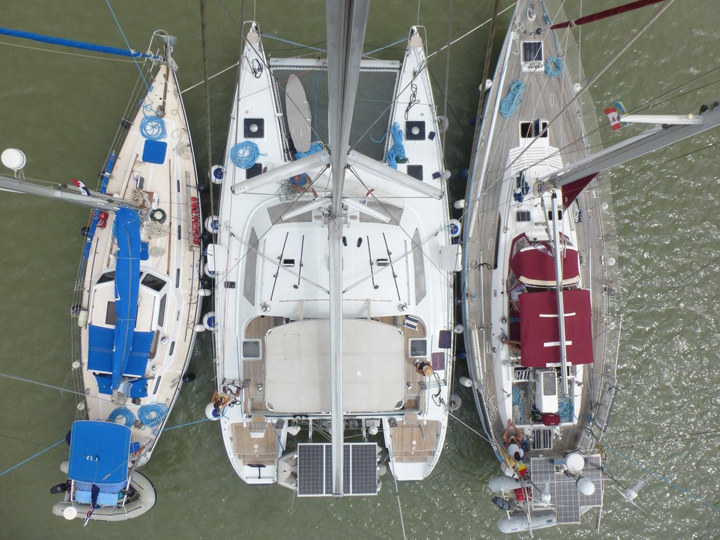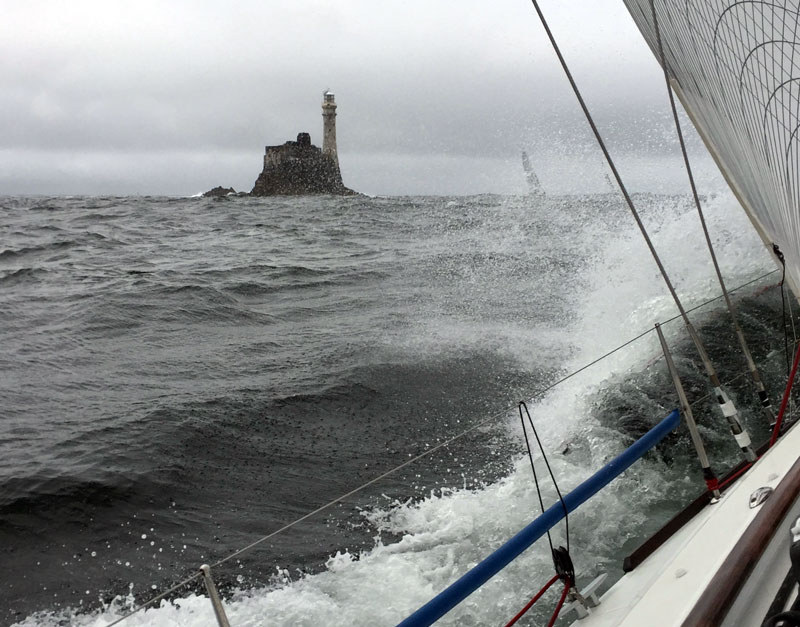
Sea Boa Struck by Whale, Sinks

At roughly 5 a.m. last Friday, Canadian singlehander Allan Tweten, 56, was in the cockpit of his Chinook 37 Sea Boa observing the first hints of a new day dawning over the Sea of Cortez when he was thrown forward by a violent blow to Sea Boa‘s underbody. He was motorsailing north at the time, roughly 27 miles southwest of Guaymas. A quick look over the side confirmed that his Stan Huntingford-designed sloop had been struck by a whale.
Although Sea Boa was equipped with four electric pumps — one with a 2-inch exit — they were incapable of keeping up with the inflow of water from what his brother described in an online post as a "very large tear in the hull." The solo sailor was reportedly very well prepared for offshore emergencies, and the boat was fully insured. As Sea Boa slowly sank lower, Tweten launched his inflatable dinghy, and put his liferaft into it along with his ditch bag, his EPIRB, satphone and other essentials. He stepped aboard the dinghy, shortly before the boat slipped below the surface.
Another cruising boat was nearby, but despite his firing off seven flares and making continuous calls on his VHF, Tweten could not raise its crew. Only then did he set off his EPIRB, followed by satphone calls to his sons in Canada, who confirmed to the Canadian Coast Guard that the EPIRB’s signal was announcing a bona fide emergency. As an illustration of the singlehander’s instinctive tendency toward self-sufficiency, Tweten actually started rowing for shore, just in case his mayday signal went unanswered. An hour and a half later, though, a Mexican Navy SAR unit arrived — having traveled at 50mph to reach the scene — and whisked Tweten off to Guaymas. He is now traveling to his home on Vancouver Island, BC.
The incident has stimulated lively discussions on cruiser forums regarding the abundance of whales in the Sea of Cortez during the winter months, and strategies for avoiding collisions with them, especially at night. Friends of Tweten note that he kept Sea Boa in immaculate condition, and speculate that his boat was probably better prepared for emergencies than most boats cruising Mexican waters. For Tweten, two ‘lessons learned’ that he hopes other sailors will take to heart are to be sure your EPIRB contact info is kept up to date, and be sure your flares have not expired. Not all of his ‘good’ flares fired, and none of his expired ones worked at all. The rescued sailor also wants to publicly thank the Mexican Navy (ENSAR) for their rapid response and impressive professionalism.
The Mast, the Poor Man’s Drone

©2016Latitude 38 Media, LLC
Scott Stolnitz of the Marina del Rey-based Switch 51 Beach House wanted an aerial shot when locking through the Pedro Miguel Locks of the Panama Canal. Not having a drone — yet — he went up the mast to get the accompanying photo.
The boats with Beach House are, at left, Kristiane from Australia, and at right, Free Wheel from Gibraltar/Sweden.
Stolnitz would be close to completing his circumnavigation now, were it not for the fact that he’s sailing across the Pacific again to Australia.
All About the Fastnet
This Friday, March 25, Sequoia Yacht Club in Redwood City will host Bay Area sailor Mike Reed for his presentation on the 2015 Rolex Fastnet. Reed, who has more than 20,000 ocean miles and is a veteran of the Rolex Sydney Hobart, Pacific Cup and Chicago Mackinaw, will detail the challenges of sailing the Fastnet, which is considered to be one of the top three most difficult races in the world. Reed served as watch captain aboard the First 40 Bunyip.

A traditional Irish menu of shepherd’s pie, along with chicken and salad, will be served for dinner starting at 6 p.m. Sequoia YC, just off Highway 101, welcomes guests to come by for an evening of hearty food and a good sea story.
